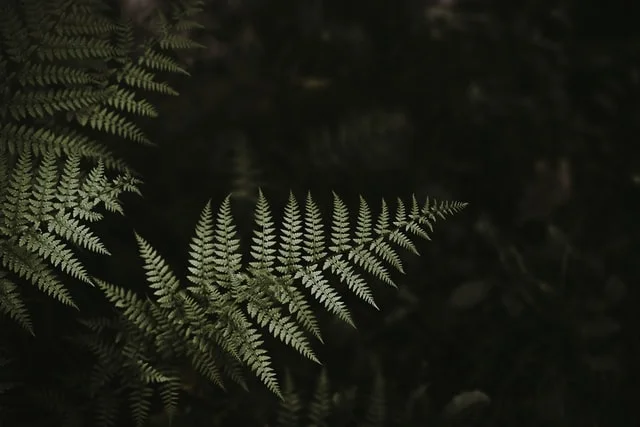Ferns can be grown inside to boost the visual appeal or outside to improve yard texture. Either way, watering them remains important to achieve your target successfully.
Ferns come from the plant division Pteridophyta with arrange of about 15 000 species.
However, most ferns prefer cool shade, acidic soil that should be evenly moist. Hence, there are exceptional conditions and various factors to be observed.
How often to water ferns depends on the kind of fern they are.
Some are swampy plants that require constant watering, whereas some need sporadic watering especially desert ferns.
For indoor ferns, they need to be watered whenever the soil gets a little moist to touch, neither should it be left to dry completely. Too much or too little hydration to these kinds of plants is detrimental on both sides.
Let us learn further on fern hydration, and the best way to keep your fern plant healthy.
Table of Contents
How to determine the water need in fern plant
The best way to know if the ferns need watering is by touching the soil at your fingers. If it slightly feels dry, consider watering.
The pot’s weight is another determinant; if the pot is lighter, it indicates that the soil is dry and you need to hydrate your plant.
Care Giving for Indoor Ferns
It’s challenging to know the quantity of water needed by a given kind with varied fern species. From their original habitat, ferns naturally grow on wood and moist soil with blending characteristics in the tropical rain forest climatic conditions.
This brings in the concern of the potting material you would want to use. It is recommended to choose a ceramic or clay pot with a hole at the bottom for proper drainage.
The soil used in potting the fern should be the one with enough air pockets, such as porous soil with manure or compost. The quantity of the soil depends on the pot’s size, preferably a large pot, to avoid frequently replanting your fern.
The porosity of the soil will help you determine how often to water the ferns.
Apply the use of double containers such as terra-cotta pots. Place the terra-cotta pot in a decorative container after planting the fern. Using moist sheet moss, stuff in between the containers as the terra-cotta pot will transfer the fern’s moisture.
Note that the more porous the soil is, the much it will need to water the ferns to avoid wilting regularly, the less porous, the high the soil’s ability to retain the water, thus less frequent watering depending on the observations on the soil moisture.
Fern Positioning
Where you choose to place your fern is a factor in considering how often to hydrate your fern plant. Choose a section in your house which does not receive excess or direct sunlight. However, locate it near to the window to enable it to soak the sun rays.
Avoid placing it too close to the window to prevent drying up of the fern. When you note the plant leaves turning brown, which is a sign that it could be receiving too much sunlight than required. Consider relocating it to a safer place where with lesser direct sunlight.
Ferns thrive well in the kitchen or bathrooms because of the humidity in these areas due to the continued flow of water. They do not require frequent watering, unlike those you would locate in other rooms.
Consider using humidifiers in less humid rooms, and they give the plant the exact environmental temperature they require in terms of moisture levels. Maintain a range of 30% to 50% humidity to keep the ferns moisturized.
Keep the room temperature at 21 degrees Celsius and 16 degrees Celsius at night.
Outdoor Fern Hydration Care
Ferns can either be grown in the yard or probably grow by themselves. In case your ferns are growing on their own, do not move them, but if you want to plant them, note that they require a shady place with enough sunlight penetration in between the plant leaves above them.
During non-rainy seasons, water the ferns twice or thrice a week to maintain them healthy. They naturally can acquire water by themselves in wet climatic conditions.
Supposing you live in the tropics or temperate regions, the ferns can survive without you watering them. To prevent plant damage, do not direct the water on the fronds but to the plant roots.
Outdoor ferns, however, are also varied in terms of how resistant they can be to environmental conditions; for instance;
- Lady fern has a beautiful upright habit and higher tolerance to dryness; thus, they can survive own.
- Southern maidenhair fern has a hardy characteristic with the ability to survive even on rocky yards thus can also survive with a little or no watering from you.
- Male fern is vase-shaped with evergreen leaves and suits well in shade, light, and requires wet soil for its survival, meaning watering it twice or thrice a week helps it keep the soil-grown wet enough.
- Ferns grown in containers need watering daily due to the faster drying of the pot. While taking a daily routine to water the plants, ensure they are not doggy but well moist.
There are ferns that slightly need more care and attention due to their different habit in growth. For example, Staghorn fern requires watering when soil is dry but before the leaves are upright and show slight wilting signs.
It is also as the staghorn fern ages, and its basal fronds turn from green to brown; this does not indicate the fronds’ removal. The fronds are important in meeting the fern’s water needs.
Other ferns are holly fern, rabbit’s foot, and brake fern need watering when the soil is slightly dry and indicates slight wilting signs.
Finally, it is contrasting in how both overwatering and under watering show signs of a reduction in growth and vigor, shriveling, and wilting.
Overwatering causes depriving of oxygen to the plants, yellowing the foliage, forming gray fungi, moss growth, and even root rot. Therefore, it is crucial to look out for the above signs, for they indicate improper watering.
Photo by Annie Spratt on Unsplash



